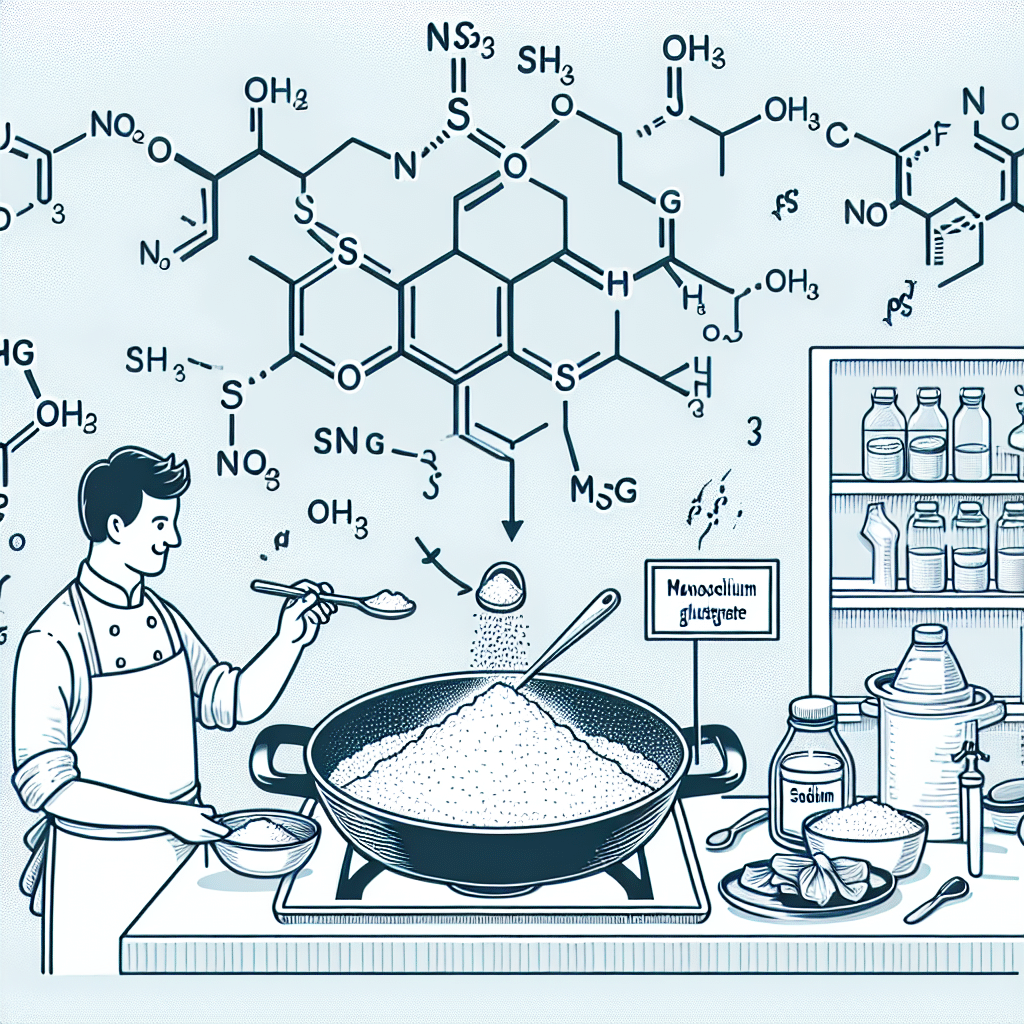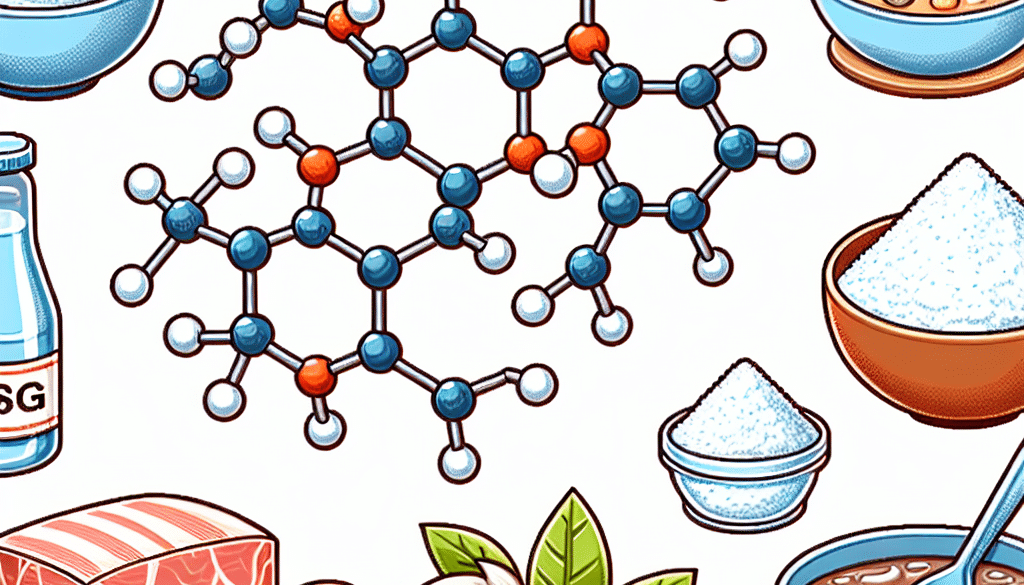What is MSG made of and how is it used?
-
Table of Contents
MSG: Understanding Its Composition and Culinary Uses

Monosodium glutamate, commonly known as MSG, is a flavor enhancer that has been a staple in culinary practices for over a century. Despite its widespread use, MSG has been surrounded by misconceptions and controversies regarding its safety and effects on health. This article aims to demystify MSG by exploring its composition, how it is made, and its various applications in the food industry. We will also delve into scientific research and statistics to provide a comprehensive understanding of MSG’s role in our diets.
What is MSG?
MSG is a sodium salt of the naturally occurring non-essential amino acid, glutamic acid. It is a white crystalline powder that combines sodium and glutamate, known for its unique ability to enhance savory flavors, often referred to as umami, the fifth basic taste alongside sweet, sour, bitter, and salty.
The Composition of MSG
MSG is composed of about 78% glutamate, 12% sodium, and about 10% water. Glutamate is an amino acid that occurs naturally in many foods, such as tomatoes, cheese, and mushrooms. The body also produces glutamate, which is vital for normal brain function as a neurotransmitter.
How is MSG Made?
MSG was first extracted from seaweed by Japanese scientist Kikunae Ikeda in 1908. Today, MSG is produced through a fermentation process similar to that used for yogurt, vinegar, and wine. The process involves fermenting starches, sugar beets, sugar cane, or molasses with specific strains of bacteria that produce glutamate. This fermentation process results in a broth that contains glutamic acid, which is then neutralized with sodium hydroxide to create MSG.
Uses of MSG in the Food Industry
MSG is used in the food industry for its ability to enhance the natural flavors of a wide variety of foods. Here are some common applications:
- Soups and Broths: MSG is often added to soups and broths to bring out the meaty, savory flavors.
- Processed Meats: It is used in processed meats like sausages and cold cuts to enhance their taste.
- Snack Foods: Many snack foods, such as chips and flavored nuts, contain MSG to improve their palatability.
- Seasoning Mixes: MSG is a component of many seasoning mixes and marinades, providing a more rounded flavor profile.
- Restaurant Foods: Many restaurants, especially fast food and Asian cuisine, use MSG to create a more intense flavor experience.
Scientific Research and Health Considerations
Over the years, MSG has been the subject of numerous scientific studies examining its safety and potential health effects. The U.S. Food and Drug Administration (FDA) classifies MSG as “generally recognized as safe” (GRAS), and it is also approved by the United Nations Food and Agriculture Organization and the World Health Organization.
While some individuals may report sensitivity to MSG, known as the “Chinese Restaurant Syndrome,” comprehensive reviews of the scientific literature have not found a definitive link between MSG and these symptoms. The FDA suggests that those who believe they are sensitive to MSG should avoid foods containing the ingredient.
Case Studies and Statistics
Despite the controversies, the global MSG market has been growing. According to a report by Grand View Research, the global MSG market size was valued at USD 4.10 billion in 2019 and is expected to grow at a compound annual growth rate (CAGR) of 4.5% from 2020 to 2027. This growth is attributed to the increasing demand for flavor enhancers in the food industry and the rising popularity of Asian cuisine worldwide.
Conclusion: Key Takeaways on MSG
In summary, MSG is a flavor enhancer made from the fermentation of natural substances like starches and sugars. It is widely used in the food industry to amplify savory flavors and is considered safe for consumption by major health organizations. While some individuals may experience sensitivity to MSG, it remains a popular ingredient in many cuisines around the world.
Discover ETprotein’s High-Quality Protein Products
If you’re looking for premium protein products to complement your dietary needs or manufacturing processes, consider ETprotein’s offerings. Their extensive range of organic bulk vegan proteins and L-(+)-Ergothioneine (EGT) caters to various industries, ensuring top-notch quality and satisfaction.
About ETprotein:
ETprotein, a reputable protein and L-(+)-Ergothioneine (EGT) Chinese factory manufacturer and supplier, is renowned for producing, stocking, exporting, and delivering the highest quality organic bulk vegan proteins and L-(+)-Ergothioneine. They include Organic rice protein, clear rice protein, pea protein, clear pea protein, watermelon seed protein, pumpkin seed protein, sunflower seed protein, mung bean protein, peanut protein, and L-(+)-Ergothioneine EGT Pharmaceutical grade, L-(+)-Ergothioneine EGT food grade, L-(+)-Ergothioneine EGT cosmetic grade, L-(+)-Ergothioneine EGT reference grade and L-(+)-Ergothioneine EGT standard. Their offerings, characterized by a neutral taste, non-GMO, allergen-free attributes, with L-(+)-Ergothioneine purity over 98%, 99%, cater to a diverse range of industries. They serve nutraceutical, pharmaceutical, cosmeceutical, veterinary, as well as food and beverage finished product distributors, traders, and manufacturers across Europe, USA, Canada, Australia, Thailand, Japan, Korea, Brazil, and Chile, among others.
ETprotein specialization includes exporting and delivering tailor-made protein powder and finished nutritional supplements. Their extensive product range covers sectors like Food and Beverage, Sports Nutrition, Weight Management, Dietary Supplements, Health and Wellness Products, and Infant Formula, ensuring comprehensive solutions to meet all your protein needs.
As a trusted company by leading global food and beverage brands and Fortune 500 companies, ETprotein reinforces China’s reputation in the global arena. For more information or to sample their products, please contact them and email sales(at)ETprotein.com today.














